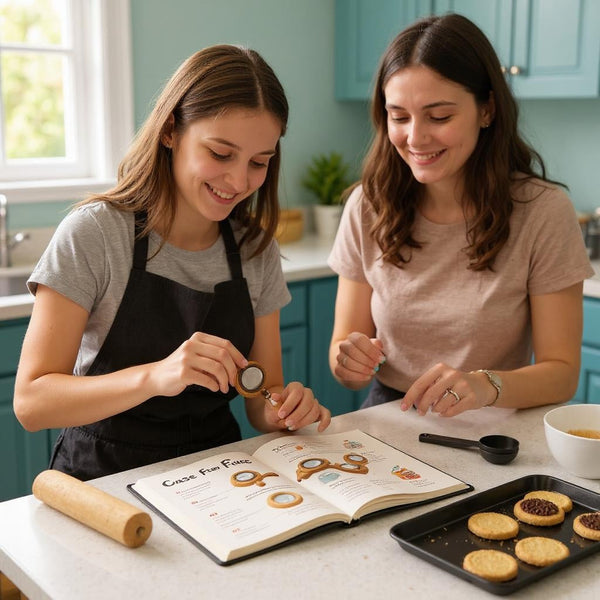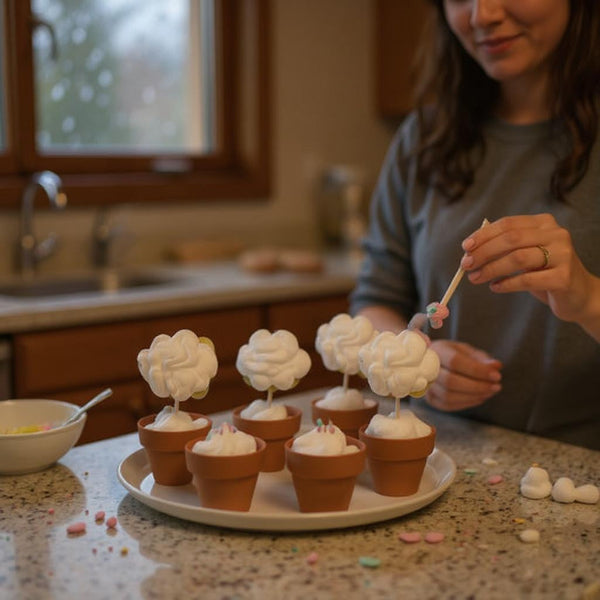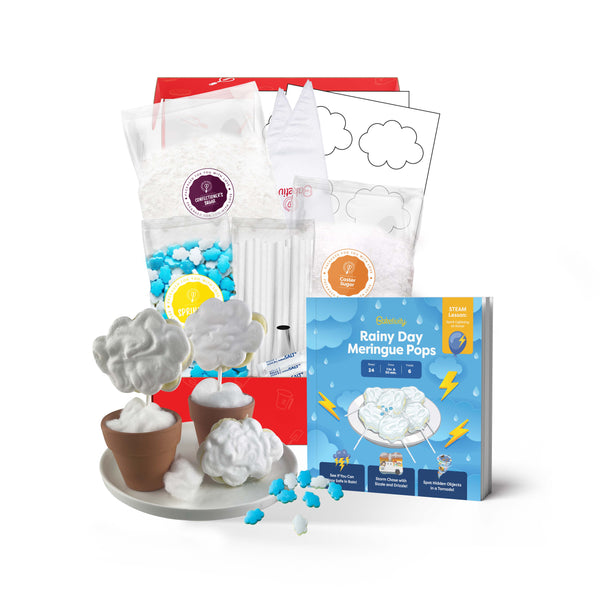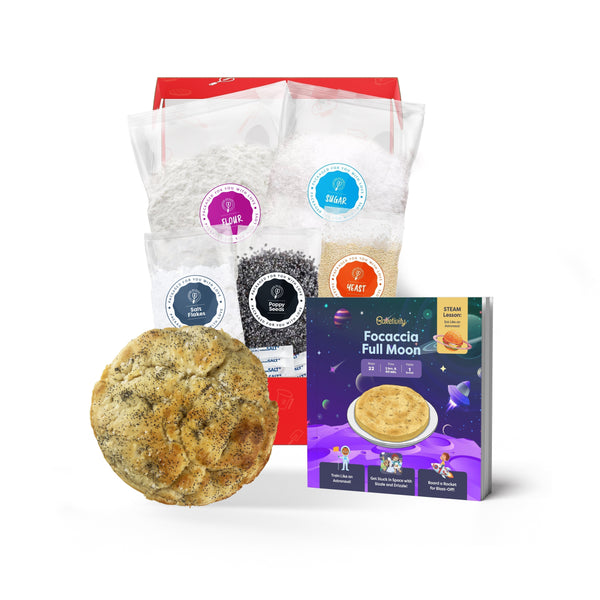Cooking is not just a way to put food on the table; it is an art form that allows you to express your creativity and impress those around you. Whether you are a novice in the kitchen or an experienced home cook, there is always room to develop your cooking skills. In this article, we will explore the various aspects of cooking and provide tips and guidance to help you become a master in the kitchen.
Understanding the Basics of Cooking
Before diving into more advanced techniques, it is essential to have a solid foundation in basic cooking. Learning the basics not only helps you build a strong culinary repertoire but also enhances your overall cooking experience. So, let's start by understanding the importance of learning
basic cooking techniques.
Cooking is not just about following recipes; it's about understanding the fundamental techniques that drive those recipes. Techniques like sautéing, braising, and roasting are the backbone of countless dishes. Mastering these basics opens up a world of culinary possibilities, allowing you to create dishes that are not only delicious but also well-executed.
The Importance of Learning Basic Cooking Techniques
Mastering basic cooking techniques is crucial because they form the building blocks of any culinary creation. By learning these techniques, you gain the foundation necessary to experiment with and adapt recipes to suit your tastes and preferences. Moreover, understanding basic cooking techniques allows you to cook efficiently and effectively, saving you time and effort in the kitchen.
Furthermore, mastering basic cooking techniques instills confidence in your abilities as a cook. Whether you're searing a steak to perfection or emulsifying a sauce, having a solid grasp of these fundamentals empowers you to tackle more complex recipes with ease.
No artist is complete without their tools, and the same goes for cooks. Having the right kitchen tools can make a world of difference in your cooking experience. From knives to pans, each tool serves a specific purpose. Invest in high-quality knives, cutting boards, pots, and pans to ensure you have the necessary equipment to execute your culinary creations with precision and ease.
Additionally, having a well-equipped kitchen not only enhances your cooking efficiency but also ensures safety. Sharp knives reduce the risk of accidents, while quality cookware distributes heat evenly, preventing burning or uneven cooking. Treat your kitchen like a chef's workshop, equipping it with the tools needed to bring your culinary visions to life.
Exploring Different Cooking Methods
Now that you have a solid understanding of the basics, it's time to explore different cooking methods. Cooking methods can be broadly divided into dry heat and moist heat techniques. Let's delve into each category.
Understanding the nuances of cooking methods is essential for elevating your culinary skills. By mastering various techniques, you can transform simple ingredients into extraordinary dishes that tantalize the taste buds and impress your guests. Let's expand on the dry heat and moist heat cooking techniques to broaden your culinary repertoire.
Dry Heat Cooking Techniques
Dry heat cooking techniques involve cooking food without the addition of moisture. Examples of dry heat cooking methods include grilling, roasting, sautéing, and baking. Each technique imparts a unique flavor profile and texture to the food. Grilling, for instance, adds a smoky charred flavor, while roasting brings out caramelized notes in vegetables and meats. Sautéing allows for quick cooking over high heat, perfect for achieving a crispy exterior on proteins. Baking, on the other hand, creates a golden crust while locking in moisture for tender results. Experimenting with dry heat cooking methods allows you to bring out the natural flavors of ingredients and develop your preferred cooking style.
Furthermore, mastering dry heat cooking techniques opens up a world of culinary possibilities. From achieving the perfect sear on a steak to creating crispy and golden-brown pastries, these methods provide a range of textures and flavors to suit every palate. Whether you prefer the simplicity of grilling or the complexity of roasting, honing your skills in dry heat cooking will set you apart in the kitchen.
Moist Heat Cooking Techniques
In contrast to dry heat cooking methods, moist heat cooking techniques involve the use of liquid during the cooking process. Common moist heat cooking methods include boiling, steaming, poaching, and simmering. These methods are perfect for delicate proteins, vegetables, and grains, as they help retain moisture and nutrients while infusing rich flavors. Boiling is ideal for cooking pasta and blanching vegetables quickly, while steaming preserves the natural colors and nutrients of ingredients. Poaching delicate fish or eggs in simmering liquid results in tender and flavorful dishes, while simmering stews and soups slowly melds together ingredients for a comforting meal.
Exploring moist heat cooking techniques allows you to master the art of gentle cooking, where flavors mingle and ingredients reach perfect harmony. The controlled environment of moist heat methods ensures that dishes are cooked evenly and retain their nutritional value. Whether you're creating a light and healthy steamed dish or a hearty braised stew, incorporating moist heat techniques into your cooking repertoire will add depth and complexity to your culinary creations.
Enhancing Your Culinary Creativity
Now that you have a strong foundation in basic cooking techniques and knowledge of different cooking methods, it's time to unleash your
culinary creativity. Cooking is not just about following recipes; it is an opportunity to explore flavors, experiment with ingredients, and showcase your unique style. Here are a few tips to enhance your culinary creativity:
Experimenting with Flavors and Ingredients
Don't be afraid to step out of your comfort zone and try new flavors and ingredients. Incorporate spices, herbs, and seasonings from different cuisines to add depth and complexity to your dishes. Visit local markets, explore the produce section of your grocery store, and experiment with new ingredients to expand your culinary horizons.
Mastering the Art of Food Presentation
Aesthetics play a significant role in the culinary world. Mastering the art of food presentation can elevate your dishes from ordinary to extraordinary. Pay attention to color, texture, and arrangement of your ingredients. Use garnishes, sauces, and plating techniques to create visually stunning dishes that will impress both your taste buds and your guests.
Advanced Cooking Techniques
As you gain confidence and expertise in the kitchen, you may be ready to explore more advanced cooking techniques. These techniques take cooking to a whole new level, allowing you to challenge yourself and create exceptional culinary experiences. Let's look at two examples of advanced cooking techniques:
Sous-vide Cooking: A Modern Approach
Sous-vide cooking involves vacuum-sealing food in a bag and cooking it at a precise temperature in a water bath. This technique ensures even cooking and allows you to achieve textures and flavors that are nearly impossible to achieve through traditional cooking methods. Sous-vide cooking is a favorite among professional chefs and food enthusiasts looking to take their culinary skills to the next level.
Molecular Gastronomy: The Science of Cooking
Molecular gastronomy is a scientific approach to cooking that combines chemistry, physics, and culinary artistry. This avant-garde style of cooking involves the use of tools and ingredients not typically found in the average kitchen. From foams and gels to liquid nitrogen and sous-vide baths, molecular gastronomy pushes the boundaries of traditional cooking techniques, resulting in visually stunning and intellectually intriguing dishes.
Maintaining Kitchen Hygiene and Safety
While culinary creativity and advanced techniques are important, ensuring
kitchen hygiene and safety should never be neglected. A clean and safe kitchen is a prerequisite for any successful cooking endeavor. Here are a few key points to keep in mind:
Importance of Kitchen Cleanliness
Regularly clean your kitchen surfaces, utensils, and equipment to prevent cross-contamination and the spread of bacteria. Properly store and handle raw ingredients to avoid foodborne illnesses. Maintaining a clean kitchen not only promotes food safety but also makes the cooking process more enjoyable and efficient.
Always prioritize safety in the kitchen. Use caution when handling sharp objects, hot surfaces, and open flames. Keep a fire extinguisher and a well-stocked first aid kit within reach. Follow proper food handling guidelines, such as defrosting meat in the refrigerator and using separate cutting boards for raw and cooked foods. By adopting safe practices, you can create a secure cooking environment for yourself and those around you.
By embracing the different aspects of cooking, from understanding the basics to exploring advanced techniques, you can truly master the art of cooking. So, put on your apron, sharpen your knives, and embark on a culinary journey that will not only nourish your body but also feed your soul.
Start Your Family Baking Adventure with Baketivity!
Ready to turn your kitchen into a fun and educational bakery? Join the Baketivity Baking Club and embark on a delightful journey of family bonding, creativity, and learning. Our baking kits, infused with quality ingredients and the joy of discovery, are designed to provide you with everything you need to create lasting memories. Embrace the art of baking and nurture your child's culinary talents today.
Join the Baking Club and let's bake up some fun!




